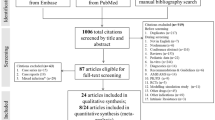Abstract
Traditional in vitro models used to simulate human pharmacokinetics and to characterize the pharmacodynamics of antibacterial agents represent a totally immunosuppressed condition. However, host defense mechanisms contribute to the elimination of the pathogen from the infectious site in most of the patients suffering from infectious diseases. Therefore, the attempt was made to introduce immuno-competence into an in vitro pharmacodynamic model. Immunocompetence was added either by using J774 macrophages growing as adherent monolayers in cell culture flasks, or by using a newly developed ex vivo model. This ex vivo model consists of sponges which have been implanted into rats for 24 h. After 24 h the sponges are explanted; at this point in time the sponges are soaked with an inflammatory exudate to which the bacteria to be tested are added. Into a slightly modified one-compartment model according to Grasso the explanted sponges which are entrapped in dialysis tubings are added. Neither the bacteria nor the inflammatory proteins nor the immunocompetent cells escape from the explants. Thus, it is possible to simulate antibiotic kinetics without diluting bacteria, the polymorphonuclear cells (PMN) or the inflammatory exudates. This ex vivo model and the J774 cell culture model were used to compare the antibacterial effects of ciprofloxacin against Pseudomonas aeruginosa and moxifloxacin against Streptococcus pneumoniae either in the absence or presence of any immunoompetence. In general, the presence of J774 macrophages resulted in an increased reduction of viable counts by 1 log10 titer. However, an increased killing of the bacteria studied by 3 to 4 log10 titers was seen in the presence of PMN and an inflammatory exudate. This increase in bacterial clearance is very well in agreement with the data obtained in animal models of infection in immunocompetent animals as compared to immunocompromised animals. Thus, it is possible to introduce immunocompetence into an in vitro model in order to simulate phamacokinetics of antibacterial agents in the presence of an inflammatory exudate and immunocompetent cells. The use of this more complex model may complement the well-established in vitro kinetic simulation models.
Similar content being viewed by others
Author information
Authors and Affiliations
Corresponding author
Additional information
* This study was presented in part (ciprofloxacin) at the 21st International Congress of Chemotherapy, Birmingham, UK, 1999; abstr. no. 29–50.
Rights and permissions
About this article
Cite this article
Dalhoff, A. Contribution of Immunocompetence to the Antibacterial Activities of Ciprofloxacin and Moxifloxacin in an in Vitro Pharmacodynamic Model*. Infection 33 (Suppl 2), 44–49 (2005). https://doi.org/10.1007/s15010-005-8207-x
Issue Date:
DOI: https://doi.org/10.1007/s15010-005-8207-x




